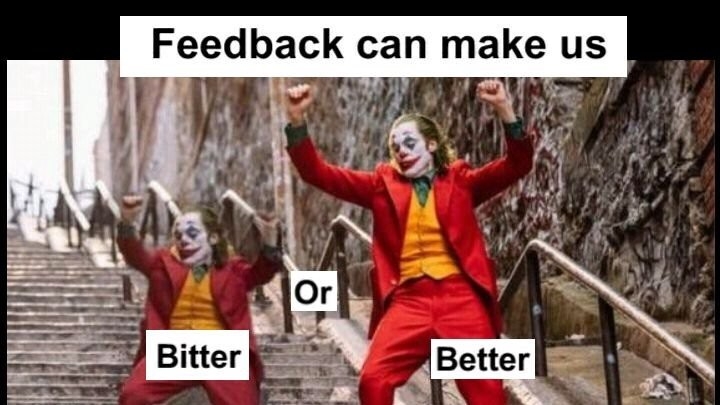Art is subjective but Design not so much. A piece of art’s purpose will be fulfilled regardless of whether its audience understands or reacts to it. In comparison, a ‘design’ needs that response in order to render itself a ‘good design’. When it comes to UX Design, in order to tackle an obstacle, designers take an objective approach of first listening to users and stakeholders, understanding their needs and frustrations to come up with a strategy, and eventually come up with solutions that solve real-world problems. Even when we have a solution, part of the process involves submitting the said solution to peers, stakeholders, and of course users.
But why am I telling you this? One key term that helps achieve this sense of objectivity is FEEDBACK (or in other words, a human ‘response’ we can analyze to see whether our solution is ‘good’; the same one Art can live without).
Giving and receiving feedback is an integral part of building products and one could argue it’s impossible for teams to build great ones without it.
However, in this pursuit of the objective truth through constant feedback we usually tend to forget something during the process: the person receiving the feedback, aka. THE DESIGNER
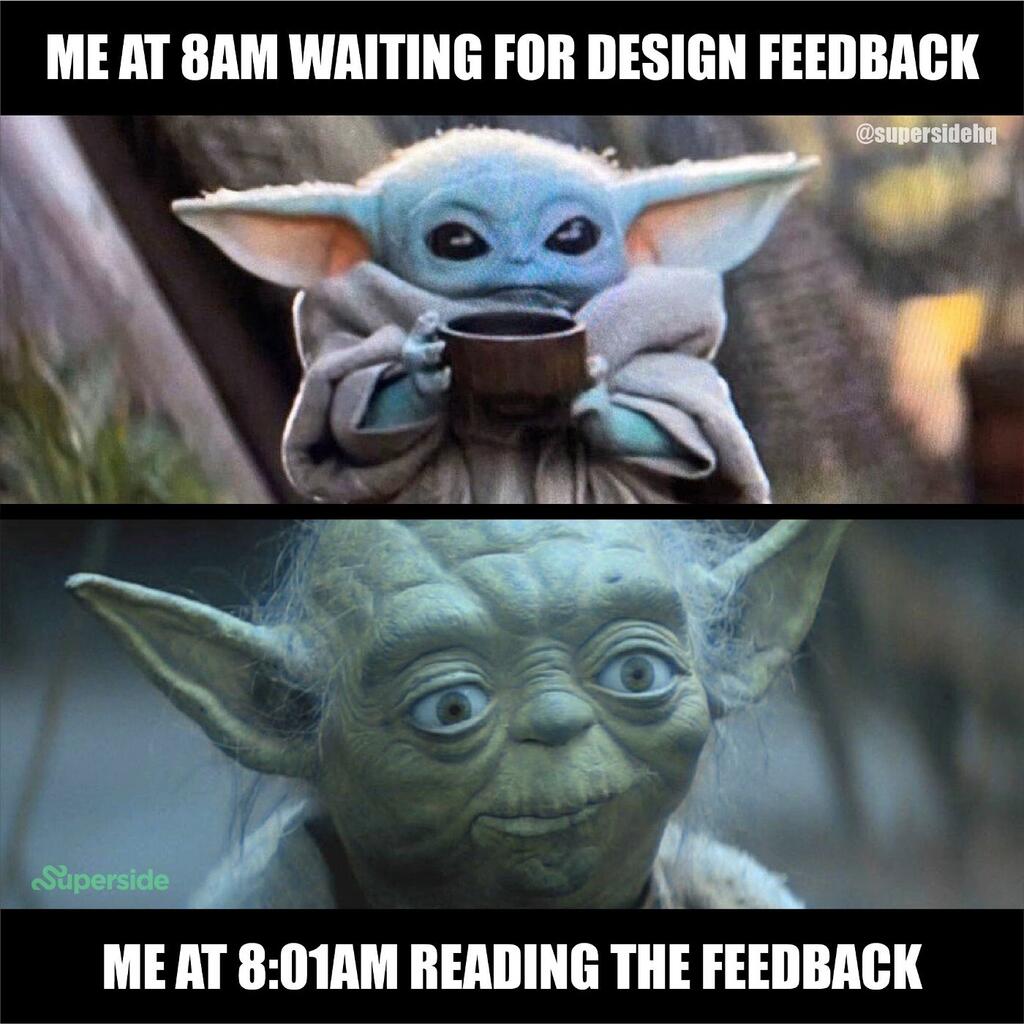
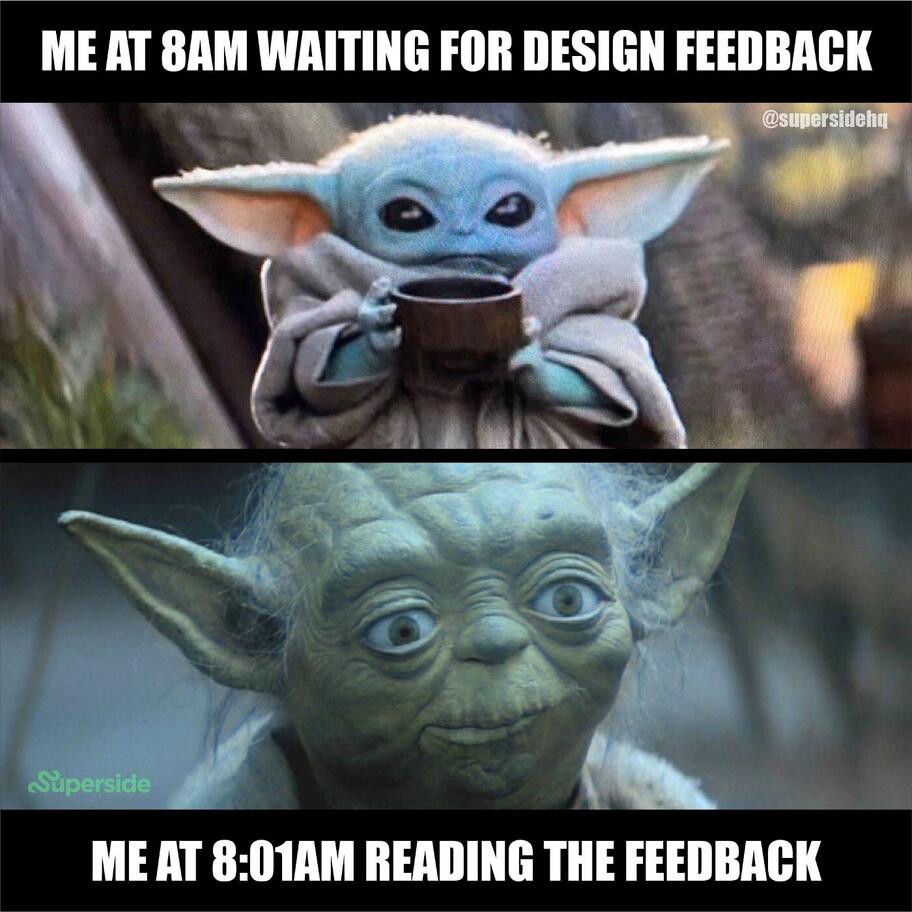
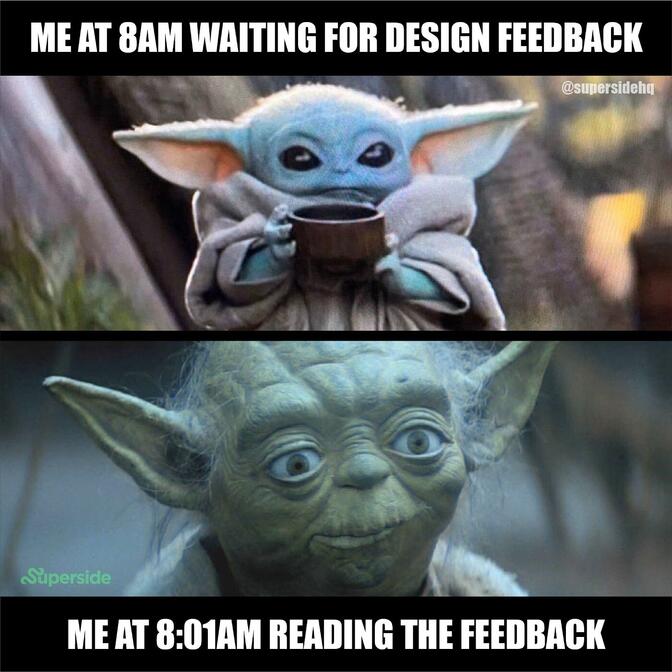
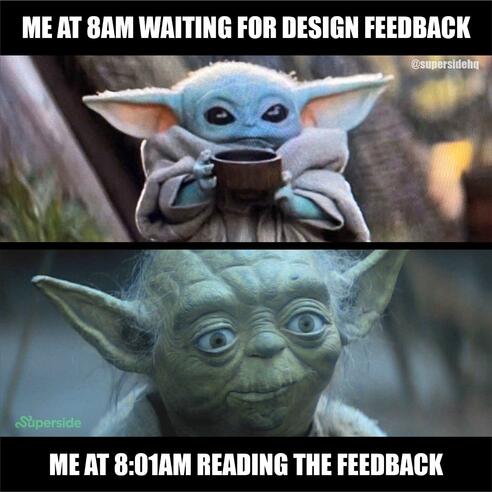
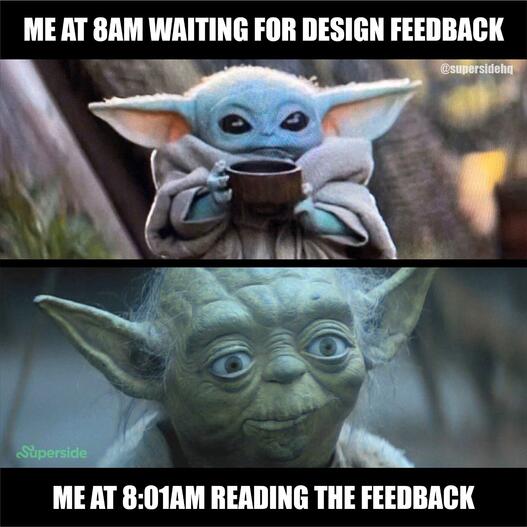
Working on new features or functionalities might take months for a designer. We dive headfirst into every task, fusing instinct and creativity with hypothesis-driven study and feedback. Every new concept, prototype, and product release is aimed towards making people happy (even though obviously not all of them end up being a success).
Feedback can be a difficult concept to handle for individuals who play creative roles. Creative people such as designers frequently view their work as an expression of who they are — of their imagination, emotions, and ideas. Criticism invariably has a tendency to come off as direct and personal. We associate our actions, output, and productivity with our sense of self-worth. Even when it’s a necessary step in the creative process, failure or rejection can undermine our sense of value given, sharing our work for feedback feels like sharing a part of ourselves with others for criticism.
In order to get over these mental hurdles, we should try practicing detachment from our work or in other words “detaching the design from the designer”
Detachment isn’t about not caring. It is a tool that has the power to provide the emotional space required for originality, creativity, and ideation without making us physically or emotionally exhausted.
Imagine receiving negative feedback from a stakeholder.
How did it feel?
If you considered the feedback without experiencing any negative emotions, well done. However, if you felt even the tiniest hint of unpleasant emotions like anger, shame, or embarrassment; detachment can assist you in managing such emotions. There’s a big difference between theory and practice but like any other skill If you practice enough, you’ll get better at it. That being said here are some tips to practice detachment from your work:
- Focus on the intent behind the given feedback and the person who gave it. This person’s goal is almost 100% of the time aligned with yours, therefore he/she gives the feedback in the first place to ‘give you a hand’; as a way to contribute to a common accomplishment of the team’s goal. Meaning that even though there certainly are good and bad ways to give feedback, chances are this person doesn’t think less of you because he/she gave feedback to you, and thus, there’s no reason to take it personally.
- Rarely does a designer’s work exist only to garner compliments. Ask yourself objectively, “Did my efforts generate progress toward our team’s goal?” while you evaluate your job. Not “Was my work well received by everyone?” when receiving feedback.
- Practice mindfulness and metacognition (the practice of thinking about thinking). Take a step back and try to understand why these negative emotions emerge when receiving feedback. Is it due to the feedback itself and or does it stem from something else.
- Receiving constructive feedback, as said, tends to feel bad. Focus on the fact it will get easier with time, but more importantly, you will get better because of it.
There are no cheat codes for detachment. The concepts of work and detachment are very personal. One person’s solution might not be suitable for another. To develop the skill, try out several techniques, and see what works best for you and your situation. Although it can be challenging to learn how to pull back from your work and objectively assess criticism, the potential it unleashes is well worth the effort. Criticism may gradually cease to feel like a personal attack and start to feel more like a tool — and a potent tool, at that.
